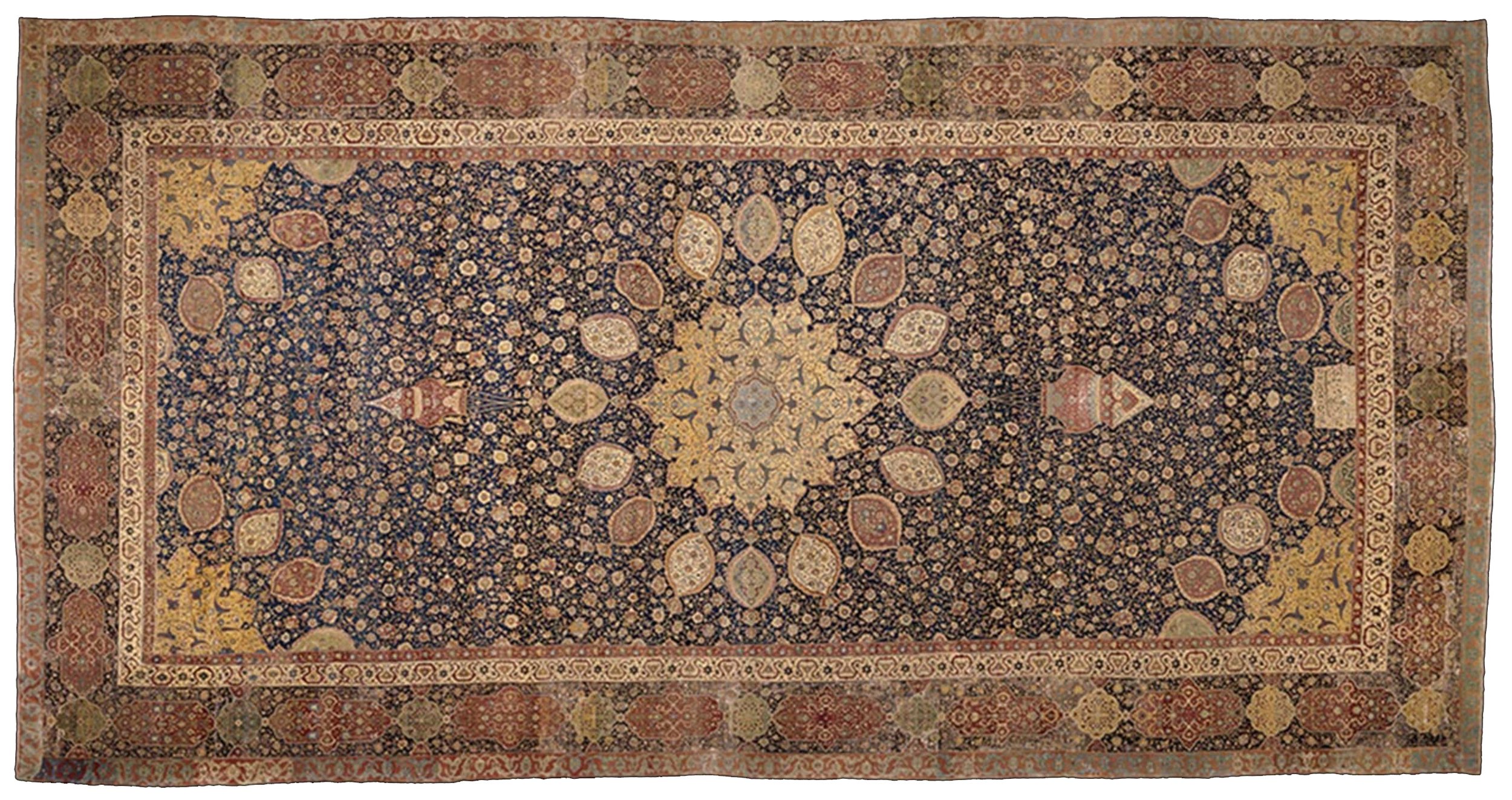Making a Classic Persian carpet, Part 1: Designing.
/The intricate patterns of Persian carpets draw inspiration from various sources, including centuries-old traditions, legends, architecture, nature and modern art. These designs are meticulously planned, with designers carefully considering every detail. This level of attention and planning before weaving distinguishes Persian classic carpets from other types, such as tribal rugs.
A palace in Isfahan, 17th century.
The 16th and 17th centuries marked significant periods in Persian carpet design, as the Safavid dynasty witnessed a flourishing of the arts. The Safavid kings were great art patrons, leading to an artistic renaissance. Many classic Persian carpets feature designs inspired by intricate ceramics, paintings, book covers, and other art forms from that era.
These designs often emphasise symmetry, order, and an elaborate centre, which serves as the focal point, surrounded by motifs resembling stylised flowers and other details, seemingly converging towards the centre.
This approach aligns with the beliefs and teachings of the mystic scholars of the Safavid era. The dynasty's founder, Safi Ali Shah, was a devoted follower of Sufism. In their philosophy, achieving the perfect form, the almighty and supreme being, is a quest attainable through personal endurance and practice. Consequently, designers often portrayed half-bloomed motifs pointing towards a fully bloomed flower at the centre.
This central medallion also resonates with Gustav Jung's concept of the "self," illustrating the universal appeal of these patterns and alluding to the theory of archetypes and collective memory.
A superfine isfahan, nishaburi family collection.
One of the most popular Persian carpet design styles is the "Shah Abbasi" pattern, rooted in the designs of the Safavid era. Nevertheless, contemporary artists have also developed numerous other styles and original designs.
An antique tabriz carpet in an unusual pattern.
Creating the final pattern for a Persian carpet begins with sketches and drawings, then refined and translated into a pixelated format on graph paper. Each square on the graph paper corresponds to a knot, with the designer painstakingly calculating and specifying the number and colour of each square.
Design of a carpet
Although this process may span several months, it is essential to ensure the precision and beauty of the final product.
More information to come…






